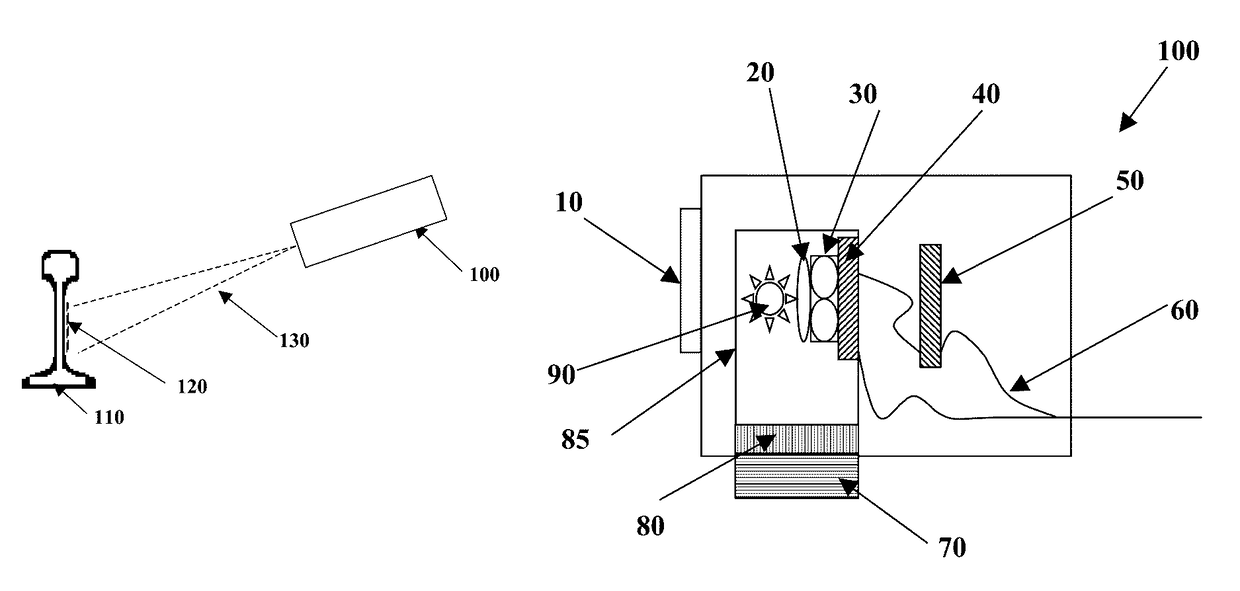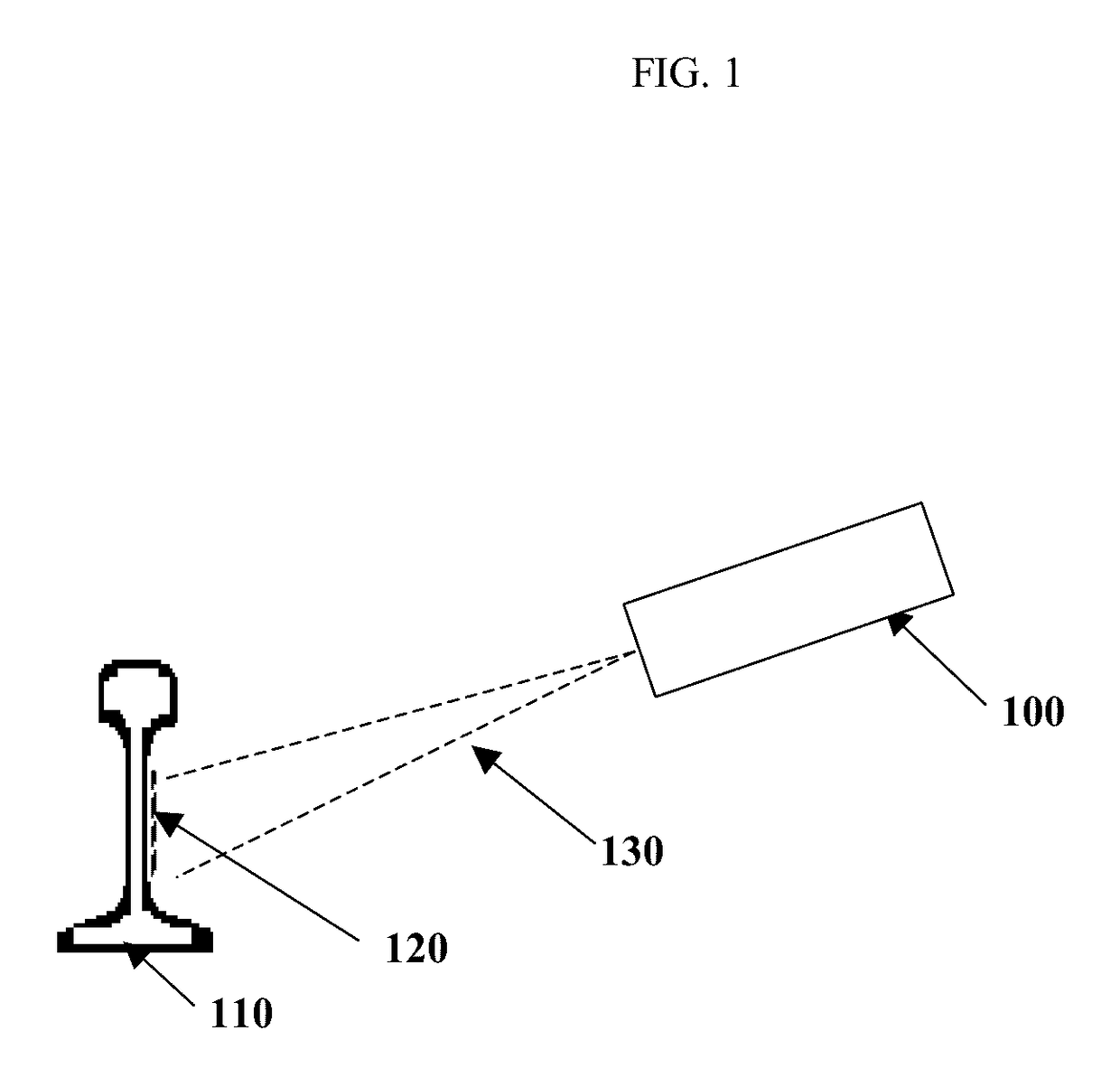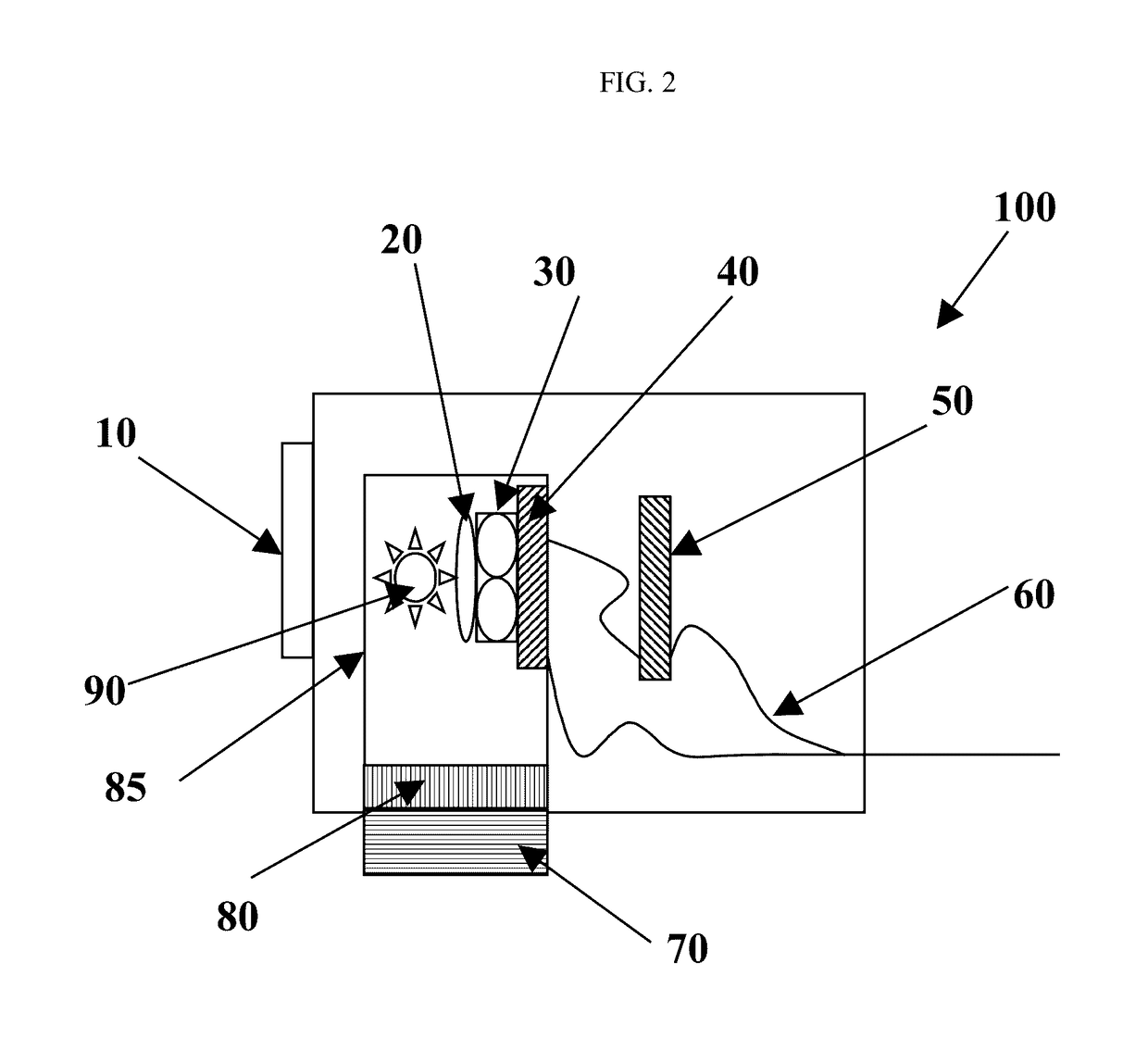Method and apparatus for measuring rail surface temperature
a surface temperature and rail technology, applied in the direction of pyrometry, optical radiation measurement, instruments, etc., can solve the problems of rail joints failing, track buckles, and is not easily accessible, and achieve the effect of non-conta
- Summary
- Abstract
- Description
- Claims
- Application Information
AI Technical Summary
Benefits of technology
Problems solved by technology
Method used
Image
Examples
Embodiment Construction
[0017]The present invention is directed to measuring temperature of a surface of a segment of a rail, hereinafter referred to as the temperature of the rail, from a stationary or a moving rail car. In this description, “a surface of a segment of a rail” and “rail” will be used interchangeably. The method measures the intensities of infrared radiation emitted by the rail and converts them to temperature of the rail utilizing relationships among the emissivity of rail surface, intensities of radiation at different wave lengths emitted by the rail, and the temperature of the rail. Measuring temperatures from the intensities of emitted radiation has been described in U.S. Pat. No. 6,111,151, U.S. Pat. No. 6,370,486, and U.S. Pat. No. 6,393,375 B1. The method of measuring the temperature of the rail will be explained with reference to FIGS. 1 through 4. FIG. 1 schematically represents a cross section of a rail 110, a side view of a segment 120 of the rail and a temperature sensor 100 whi...
PUM
 Login to View More
Login to View More Abstract
Description
Claims
Application Information
 Login to View More
Login to View More - R&D
- Intellectual Property
- Life Sciences
- Materials
- Tech Scout
- Unparalleled Data Quality
- Higher Quality Content
- 60% Fewer Hallucinations
Browse by: Latest US Patents, China's latest patents, Technical Efficacy Thesaurus, Application Domain, Technology Topic, Popular Technical Reports.
© 2025 PatSnap. All rights reserved.Legal|Privacy policy|Modern Slavery Act Transparency Statement|Sitemap|About US| Contact US: help@patsnap.com



